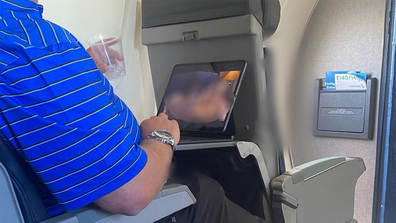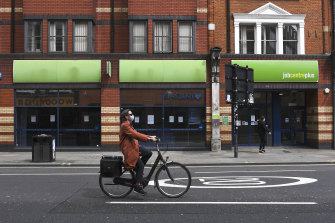The month in summary:
Developed market shares gained in July as investors began to focus on the prospect of interest rate cuts next year, given signs of a slowing global economy. Growth stocks were the main beneficiaries, with strong gains in July after poor performance year-to-date. However, emerging market equities lagged amid weakness in China. Bond yields fell, meaning prices rose.
Please note any past performance mentioned is not a guide to future performance and may not be repeated. The sectors, securities, regions and countries shown are for illustrative purposes only and are not to be considered a recommendation to buy or sell.
US
US equities rebounded in July. As anticipated, the Federal Reserve (Fed) hiked interest rates by 75 basis points (bps); however, chair Jerome Powell subsequently commented that the pace of policy tightening is likely to relent from here. In prepared comments, Powell said “the labor market is extremely tight and inflation much too high” but concluded that the pace of increases may now slow down.
On the data front, US GDP contracted 0.9% on an annualized basis in Q2 following a decline of 1.6% in Q1. Inflation as measured by the headline consumer price index (year-on-year) came in above consensus at 9.1% in June. This was the largest increase in more than four decades, leaving consumers having to pay higher prices for gas, food, healthcare and rents. The headline unemployment rate held steady at 3.6% in June.
Equities rally. All sectors advanced, with consumer discretionary and tech companies making some of the strongest gains. Automotive stocks rally strongly. More defensive areas of the economy such as consumer staples lagged.
euro zone
Eurozone shares gained in July, along with other major stock markets. The European Central Bank (ECB) raised interest rates by a larger-than-expected 50 basis points (bps), ending the era of negative rates. The ECB also unveiled its new “anti-fragmentation tool” which is designed to prevent bond yields in the periphery (particularly Italy) widening excessively compared to German yields. The move coincided with Mario Draghi’s resignation as Italian prime minister, with an election due on 25 September.
Economically sensitive parts of the market led the way with double-digit gains for the information technology, consumer discretionary and industrial sectors. By contrast, the energy, financials and communication services sectors were largely flat.
A flash report put eurozone annual inflation at 8.9% in July, with energy prices again contributing the largest proportion of the rise. There were heightened concerns about the security of gas supply to Europe during the month after the Nord Stream 1 pipeline, which supplies gas from Russia to Germany, was closed for maintenance and then reopened at reduced capacity. GDP in the second quarter grew by 0.7% quarter-on-quarter. However, the European Commission’s consumer confidence reading dropped to a record low of -27.0 in July.
UK
UK equities bounced back over July. The recovery was in large part driven by the consumer discretionary and industrial sectors, areas which have performed poorly since the start of 2022 but recovered well in July. They had been weighed down by the cost of living crisis clouding the outlook for the UK consumer and economy more broadly, and the negative impact of rising interest rate expectations on valuations of many high growth companies.
These trends particularly benefited UK mid-cap companies. In contrast, some of the more defensive large cap areas of the market – such as healthcare and telecommunications, performed poorly over July. These more defensive sectors had previously contributed to the UK’s relatively strong relative year-to-date performance.
Meanwhile, other outperforming large cap sectors of 2022, including energy and resources lagged. This was partly due to worries around the outlook for the global economy weighing on commodity prices. Meanwhile, moderating expectations around further interest rate rises were a negative for financials.
Despite an uncertain outlook, it was revealed the UK economy enjoyed a strong month in May, with output growing by 0.5%, after shrinking 0.2% in April. The collapse of the Boris Johnson premiership, which has triggered a leadership contest for the Conservative Party and race to be the next UK PM, added to uncertainty about the direction of the country and economy.
Japanese
The Japanese stock market rose steadily during July, ending 3.7% higher. In the second half of the month, the yen reversed some of its recent losses against the US dollar but remains significantly weaker than the level at the beginning of the year. The yen also strengthened against sterling in July.
Market events in July were overshadowed by the shocking assassination of former Prime Minister Shinzo Abe on 8 July. Although Japan has had two Prime Ministers since Mr Abe, he remained a hugely influential figure within the ruling Liberal Democratic Party (LDP). In the immediate aftermath, however, the resulting strong support shown for the LDP in the Upper House elections has solidified the position of current Prime Minister Kishida.
As widely expected, the Bank of Japan left policy unchanged at its July meeting and the interest rate differential with the US therefore widened further after the decision by the US Federal Reserve to raise rates by 0.75%. Data released in July showed Japan’s core inflation rate, excluding fresh food, continued to edge up to 2.2% in June.
In recent months expectations have grown for a consumption-led rebound in Japan’s domestic economy, but the latest wave of Covid infections has introduced renewed uncertainty over the timing of this. There was a solid start to the corporate results season for the March to June quarter, with the bulk of announcements due in early July.
Asia (formerly Japan)
Asia ex Japan equities registered a negative return in July, as declines in China and Hong Kong offset gains in India, South Korea and Singapore. China was the worst-performing market in the MSCI Asia ex Japan index in July as slowing economic growth, ongoing Covid-19 lockdown measures (as part of China’s zero-Covid policy) and regulatory issues weakened investor sentiment towards the country.
In Hong Kong, heavy selling of technology stocks, such as e-commerce company Alibaba, dragged the market lower, while Thailand also ended the month in negative territory.
India was the best-performing market in the index on renewed investor optimism. South Korea also achieved a solid gain in July after the country announced that the economy had grown by 0.7% in the second quarter, compared to the first quarter, exceeding analyst expectations.
Singapore also achieved a strong performance in July, due to investor confidence on corporate earnings and support from energy and technology stocks, while gains achieved in Taiwan, Indonesia and Malaysia were more muted in the month.
emerging markets
Emerging market (EM) equities posted a negative return in July, underperforming global equities by the most since July 2015. Overall, EM did not participate in the bounce in seen in developed markets in the month. This was largely attributable to weakness in China as the majority of other index markets finished in positive territory. Dollar strength remained a headwind.
China was the worst index performer. Economic data released in the month was mixed. While the economy expanded at its slowest rate since the beginning of 2020, at 0.4% year-on-year in Q2, June’s exports grew 17.9% compared to the same month last year. Meanwhile, problems in the property market continued to spread and new Covid lockdown measures were imposed in several cities in response to the spread of the Omicron variant.
Turkey, Colombia and Thailand were also weak and underperformed broader emerging markets. Softer energy prices were a headwind for crude oil exporter Colombia, while in Turkey, lira depreciation weighed on returns, as did inflation data which showed consumer prices accelerating 78% year-on-year.
By contrast, Chile was the best-performing index market, aided by currency strength. India also delivered a strongly positive return. Lower energy prices over the month were helpful, as was the government’s reversal of a windfall tax on local crude oil sales and fuel exports.
Despite weaker energy prices, Qatar, Saudi Arabia and UAE outperformed, supported by some good earnings results over the month. On the macroeconomic front, the Saudi economy grew at 11.8% year-on-year in Q2 and both the UAE and Saudi announced fiscal stimulus packages to aid low-income citizens.
global bonds
Bond yields fell in July, alleviating some of the intense pressure seen year-to-date (falling yields implies rising prices). Softening data in the US supported bonds as investors weighed an economic downturn and potentially more moderate interest rate rises.
There was evidence of a slowdown in the US economy, with housing activity particularly weak as higher mortgage costs constrained demand. The Federal Reserve (Fed) however hiked the policy rate by 75 basis points (bps) in an attempt to constrain inflation pressures. The US 10-year yield fell from 2.97% to 2.64%, with the yield curve flattening.
There were significant developments in Europe. The European Central Bank (ECB) raised interest rates by 50bps, its first hike in 11 years, and ending the era of negative interest rates, which began in 2014.
At the same time, following its discussions for an “anti-fragmentation” policy in June, it announced a “Transmission Protection Instrument” (TPI). Detail is limited, but this will allow potentially unlimited purchases of sovereign bonds to counter “disorderly market dynamics”.
While Europe continues to face elevated inflationary pressures, there has also been renewed political uncertainty in Italy culminating in Mario Draghi’s resignation as prime minister this month. This has destabilized Italian government bonds in recent weeks.
European yields appeared to be led more by growth concerns too, however, and declined over the month. Germany’s 10-year yield fell from 1.37% to 0.82% and Italy’s from 3.39% to 3.15%.
Corporate bonds enjoyed a strong rebound and outperformed government bonds. Euro investment grade and US high yield did particularly well. (Investment grade bonds are the highest quality bonds as determined by a credit rating agency; high yield bonds are more speculative, with a credit rating below investment grade).
Emerging market (EM) bonds also saw positive returns, particularly hard currency investment grade sovereign debt. Local currency bonds performed well in local terms; however, most EM currencies weakened against the US dollar.
With global equities gaining over 7%, convertible bonds were able to play off their core strength and delivered around 60% upside participation in the gains. The Refinitiv Global Focus convertible bond index gained 4.2% in US dollar terms.
commodities
The S&P GSCI Index achieved a flat return in July as declines in agriculture and precious metals offset higher livestock prices. Agriculture was the worst performing component of the index in July, with sharp falls recorded in the price of wheat due to an improvement in the production outlook and better weather conditions. Sugar and coffee prices also declined in July. In the precious metals component, the price of both gold and silver declined.
Within energy, natural gas prices spiked amid heightened worries over Russian gas supply to Europe. Livestock was the best performing sector. Within industrial metals, lead and zinc achieved robust price gains, while gains for nickel and aluminum were more muted. The price of copper fell in July.


The value of investments and the income from them may go down as well as amounts up and investors may not get back the originally invested.




























